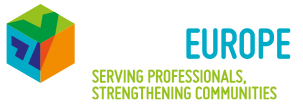In this very personal piece, David Levin-Kruss, Yesod Europe’s Jewish Learning Director, writes about how lessons from a traumatic childhood experience guide him in teaching, building community, and understanding what Torah can be. His vision is of one where all have an honoured place in the Jewish world. Shared in honour of Shavuot when we celebrate the revelation at Mount Sinai.
In 1972, in white suburban apartheid South Africa, conformity was important. In primary school one of the ways this expressed itself was through an emphasis on good handwriting: Capital letters double the size of small letters, almost but not completely touching the upper line, all strokes completely straight. I was in my second year of school and my co-ordination was not ready to do this. In addition, my young creative soul rebelled against this inflexible structure, and I decorated my letters with tails and hats and used slanted lines.
This drove my teacher to distraction, to the point where she called all the children to her desk, showed them how ugly my work was, confiscated my pencils and exercise books and banished me to the newly created “piggy corner” where I had to write on newspaper in crayon.
This incident disappeared from my consciousness, or so I thought. I found ways besides handwriting to express my creativity. I wrote and produced plays, composed poetry and short stories. At one point I even learned calligraphy.
But unsurprisingly, the episode was never really put to rest. Around the end of high school, I abruptly stopped imaginative writing and, though a very chatty person, suddenly stopped speaking in certain classes – classes where I either felt intimidated by other students or invalidated by the teacher. I did not connect this to my 1972 experience until many, many years later.
I was at a seminar with students who were much smarter than I was. Often, I would come to class with an abstract theory, but I was always hesitant to share these for fear that I was wrong. Later I would hear the same or similar ideas presented by a fellow participant or the instructor.
On the last day of the seminar, I had a theory I felt particularly proud of. I looked out of the window, willing myself to put up by hand. I decided to take my left hand and force it to pick up my right but when I looked down, I saw that, without realizing, I was writing my name repeatedly in a childish script – desperately trying but failing to write capital letters double the size of small letters, almost but not completely touching the upper line, all strokes completely straight.
This moment informed my work as an educator and community builder. It taught me to value difference and creativity, affirm people, to be flexible with one’s expectations and to know that there is more than one good way to complete a task.
But what really healed me was a passage in the Babylonian Talmud (Menachot 29b). We read:
בשעה שעלה משה למרום מצאו להקב”ה שיושב וקושר כתרים לאותיות אמר לפניו רבש”ע מי מעכב על ידך אמר לו אדם אחד יש שעתיד להיות בסוף כמה דורות ועקיבא בן יוסף שמו שעתיד לדרוש על כל קוץ וקוץ תילין תילין של הלכות
When Moses rose on High, he found the Holy One sitting and securing crowns on the letters of the Torah. Moses said: Master of the Universe, who is preventing You from giving the Torah without these extras? God said to him: There is a man who will be born after several generations, and Akiva ben Yosef is his name; he will learn from each thorn of these crowns, heaps of laws.
Imagine my excitement when I learned that God too writes letters with tails and hats and uses slanted lines. When I decorate my letters, I am engaging in imitatio Dei, becoming like God. The God I believe in values difference and creativity, affirms people, is flexible with expectations and knows that there is more than one good way to complete a task.
When we re-enact the receiving of the Torah on Shavuot this is the quality of the Torah I will be accepting, and this is the world I invite us all to build.
